Read the history
The
Beginning
1896–1913
-
1896
Establishment of Kawasaki Dockyard Co., Ltd. (Kobe).
Appointment of Kojiro Matsukata as the first company president.Kawasaki Dockyard was established, and when the Sino-Japanese War broke out seven years later in 1894, the long-stagnate shipbuilding industry became prosperous. Kawasaki Dockyard was also very busy as orders flooded in, mainly for ship repair.
During this time, Shozo Kawasaki decided to reorganize the company into a joint-stock corporation to allow for the future expansion of the company, and chose Kojiro Matsukata as his successor. Kojiro Matsukata was the third son of Masayoshi Matsukata, Kawasaki’s business benefactor from the same hometown.
Kojiro Matsukata was born in Kagoshima in 1865. He was appointed as secretary to the prime minister when his father, Masayoshi, formed the First Matsukata Cabinet in 1891. After Masayoshi retired in 1892, Kojiro Matsukata was appointed as the first president of Kawasaki Dockyard Co., Ltd. in 1896. As company president, he spent the next thirty-two years developing the company into one of Japan’s leading heavy industries companies. He did this by expanding into the rolling stock, aircraft, and shipping businesses, and by implementing various measures, such as Japan’s first eight-hour workday system. Matsukata was also known as an art collector, and the “Matsukata Collection,” which he collected at his own expense and is said to amount to 10,000 pieces, became the basis of the National Museum of Western Art. Ukiyo-e prints collected by Kojiro Matsukata are also being housed at the Tokyo National Museum.
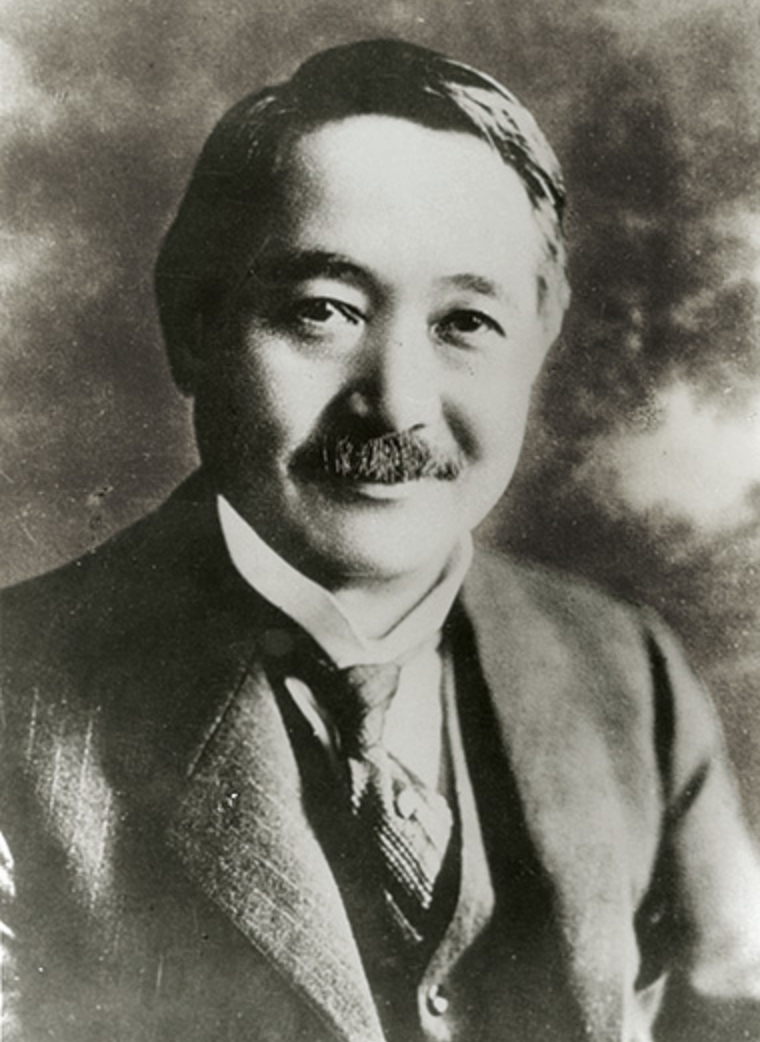
First president, Kojiro Matsukata
-
1897
Launch of Iyomaru (Kawasaki Dockyard’s first ship)
Kawasaki Dockyard Co., Ltd. constructed the cargo-passenger ship, Iyomaru (727 GT) in 1897, our first ship since becoming a publicly traded company. During Shozo Kawasaki’s ten years of private management between 1886 and 1896, Kawasaki Dockyard built eighty new ships, including six steel ships such as the 570-ton Tamagawamaru. At that time, the material used for shipbuilding was rapidly modernizing from iron to steel, and the first steel ship in Japan was completed in 1890. The history of Kawasaki Dockyard is thus said to be the history of Japan’s modern shipbuilding industry.
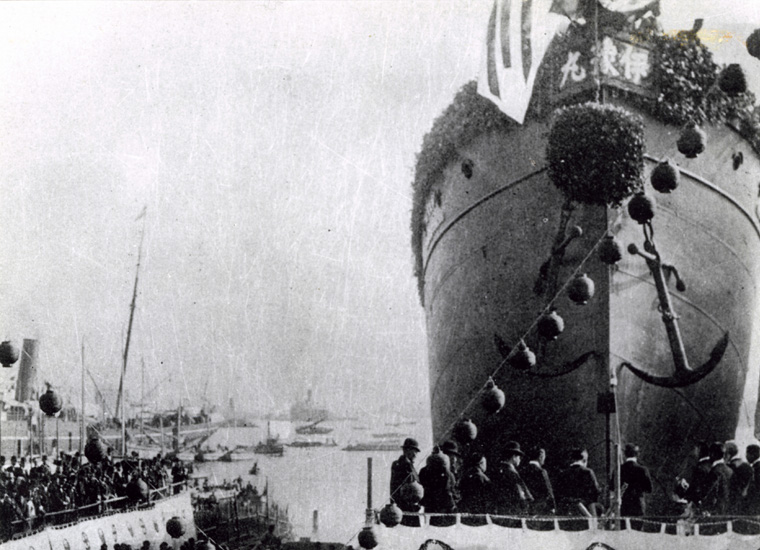
HP Cargo-passenger ship Iyomaru
(First ship of Kawasaki Dockyard Co., Ltd.) -
1902
Completion of dry dock (Kobe Works First Dock)
Shozo Kawasaki realized that a drastic facility expansion was necessary since Kawasaki Dockyard had been inaugurated. He planned to construct a dry dock by reclaiming land in the dockyard premises. Geotechnical investigations were launched in 1892, and boring tests were carried out in 1895. When Kawasaki Dockyard was reorganized into a joint-stock company, the request to construct a dry dock was passed on to the first company president, Kojiro Matsukata, who launched the construction straight after being appointed as the first company president.
Construction work faced rough going due to the extremely weak foundations of the site on the Minato River delta in Kobe. After a few failures, a new underwater concrete pouring technique was adopted, and the dry dock was finally completed in 1902, six years after construction had commenced. (Length: 130 m; Width: 15.7 m; Depth: 5.5 m; Maximum size of ships that can be docked: 6,000 GT) It was a large project with a construction time and cost three times as much as what was typical at the time.
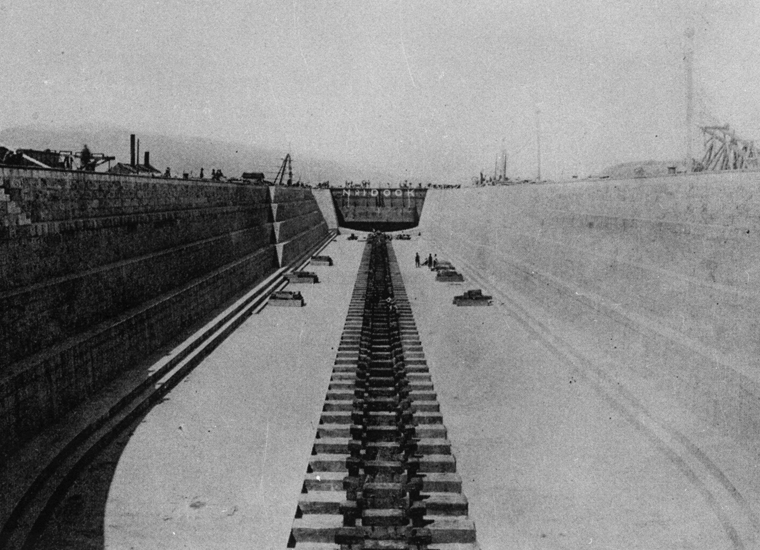
Dry dock (Kobe Works First Dock): In 1998, it was registered as the first dry dock in Japan to be designated as a registered cultural property under the Law for the Protection of Cultural Properties.
-
1906
Opening of the Unga Branch Works
Kojiro Matsukata was highly motivated to expand into new business areas. He focused on the manufacture of railway cars as a promising new business, and opened the Unga Branch Works (Which was later the Hyogo Branch Works). Construction began on locomotives, freight and passenger cars, and bridge girders. The following year, the dockyard also began the construction of steam turbines to be used as the main engines of ships.
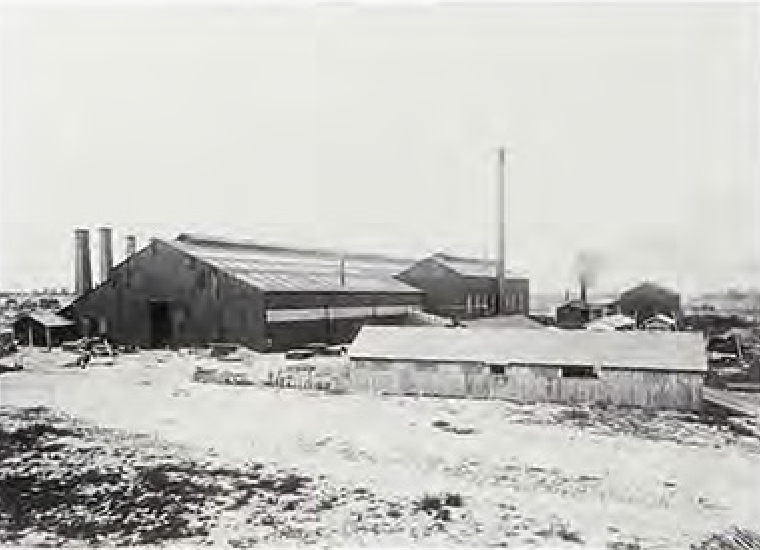
Hyogo Branch Works
-
1906
Completion of Japan’s first submarine
The Japanese Navy began to consider introducing submarines around 1901, and decided to establish a submarine unit due to the outbreak of the Russo-Japanese War. In 1904, five Holland-type submarines, (Submarines No. 1 to No. 5), were imported from the United States. At the same time, the domestic production of submarines started to be promoted, and, in the same year, our company received orders for the first two to be made. The designs provided by the navy were made by J. P. Holland, the designer of the Holland-type submarine, but the details were left to the company doing the construction. Our company devoted all of its efforts to undertaking the construction in order to live up to the expectations of the navy and show Japan’s excellence in shipbuilding technique to the world. Engineers were invited from the United States, and with further research even after construction had started, and after overcoming many difficulties, Kawasaki completed submarines No. 6 and No. 7, the first submarines made in Japan, which they delivered to the navy in 1906.
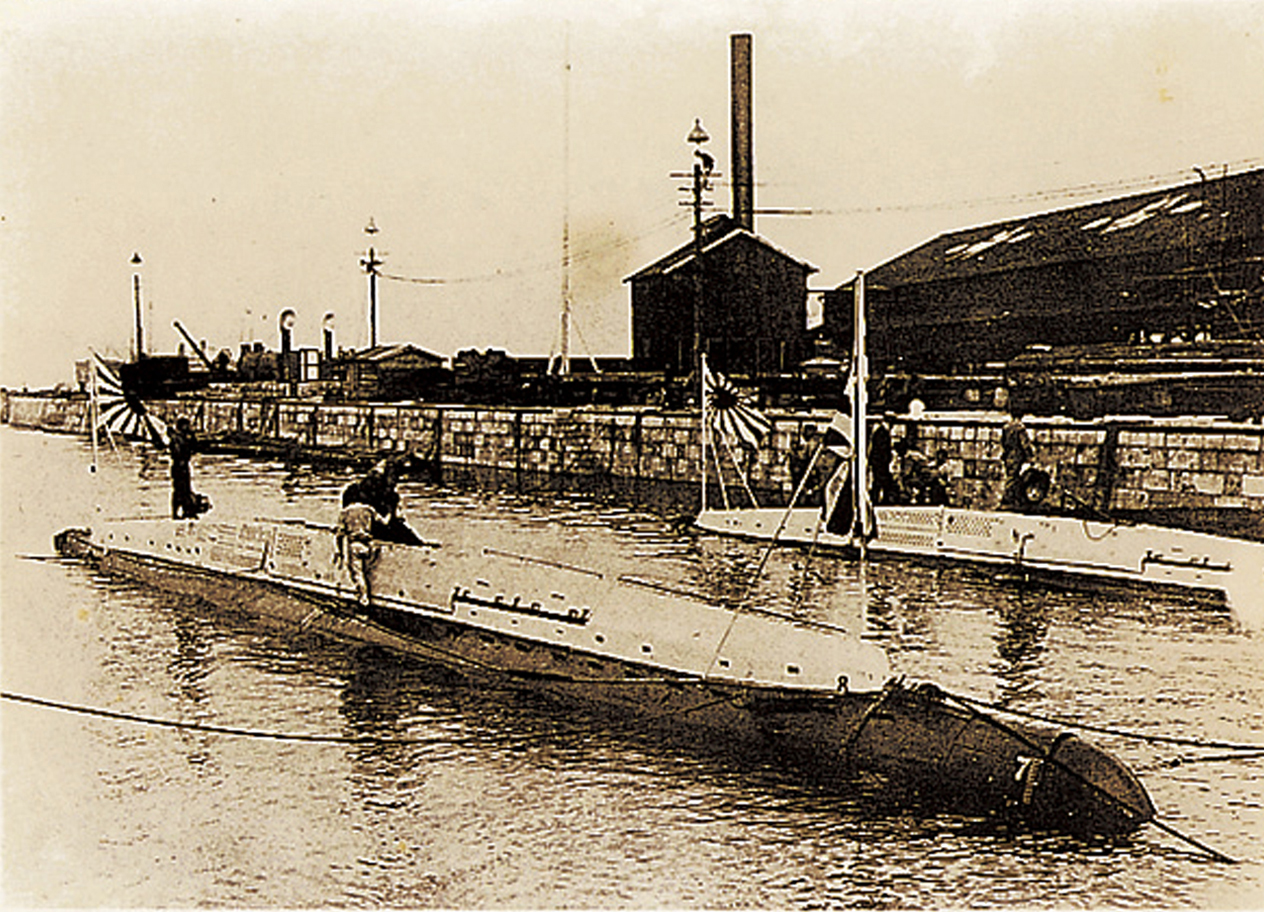
Holland-type submarines No. 6 and No. 7 under examination in the dry dock
-
1908
Completion of Yodo, the first large warship by a private shipyard
After the Battle of Tsushima, the naval battle that decided Japan’s victory in the Russo-Japanese War, the Japanese government made plans to strengthen its naval force by domesticating the manufacture of large capital ships, which had previously been made abroad. Due to this, even private shipyards would start receiving orders for large-sized vessels such as destroyers and torpedo boats. Our company built the dispatch boat, Yodo, becoming the first private shipyard to produce a warship with a displacement exceeding 1,000 tons. The Yodo was highly regarded by naval officials and marked the beginning of full-scale warship construction by the private sector of the shipbuilding industry.
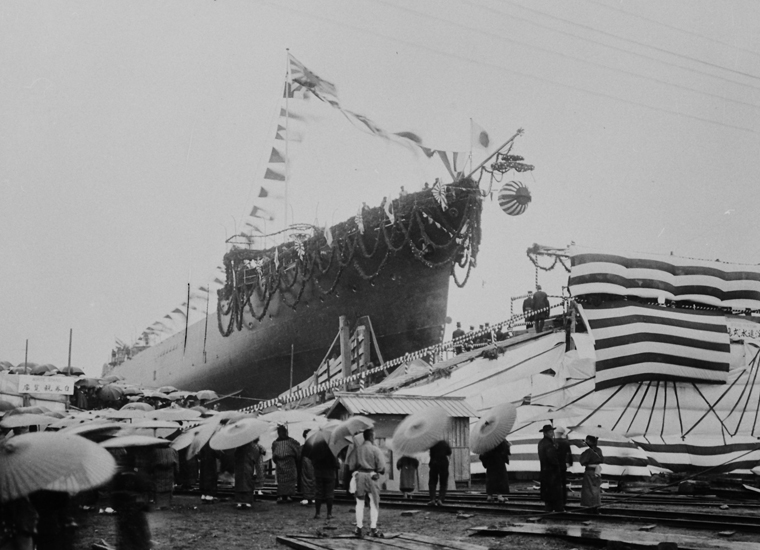
Large warship, Yodo
-
1911
Completion of first Japanese-made steam locomotive
Steam locomotives ran in Japan for the first time in 1872, when a railway opened between Shinagawa and Yokohama. This “land steam engine” had been imported from the United Kingdom. Our company started manufacturing rolling stock in 1907, and sent the first Japanese-made steam locomotive into the world four years later. It was the Type 2B saturated steam tender locomotive Type 6700 No. 6704 for the Ministry of Railways. Its performance was extremely excellent. A statement that came from the Ministry of Railways in later years, it was noted: “Its performance was good, and it was in no way inferior to foreign-made locomotives.” Kawasaki manufactured a total of 3,237 steam locomotives by 1971, contributing greatly to the popularization and improvement of railways in Japan.
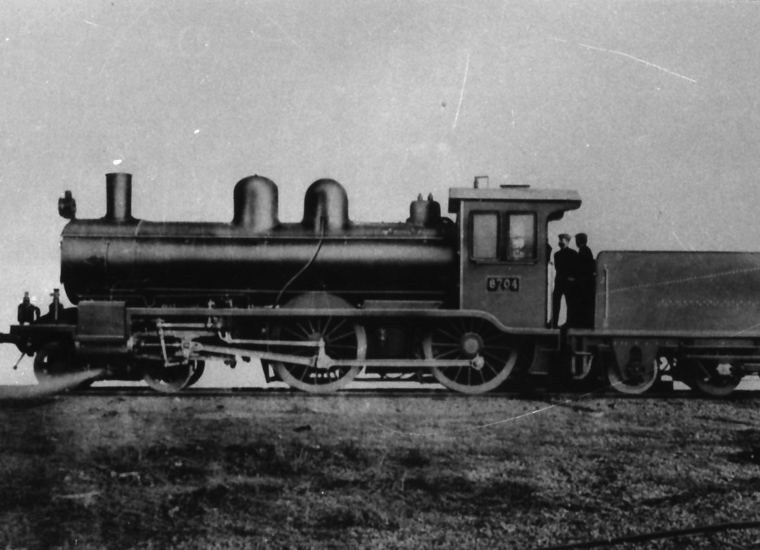
First Japanese-made steam locomotive